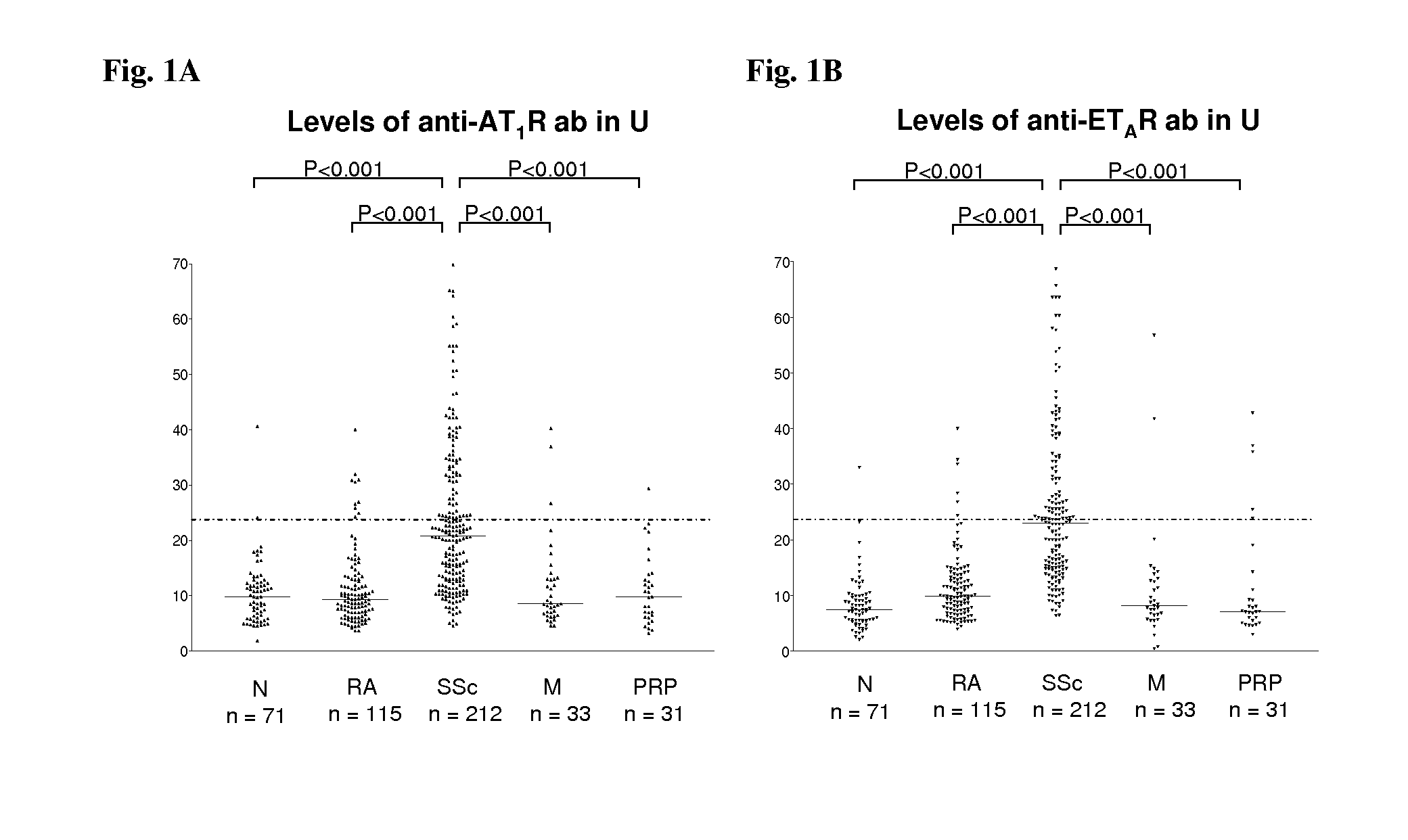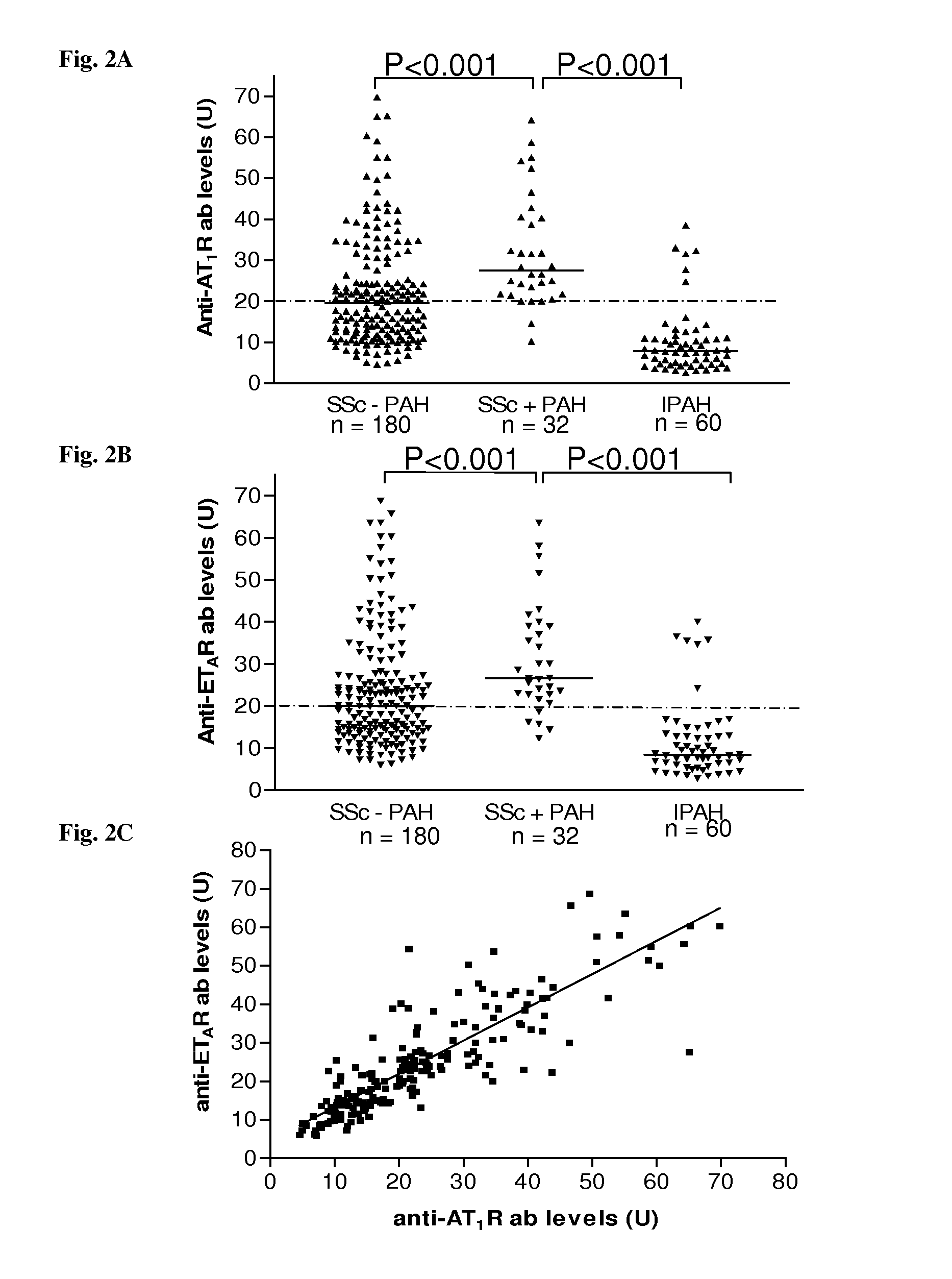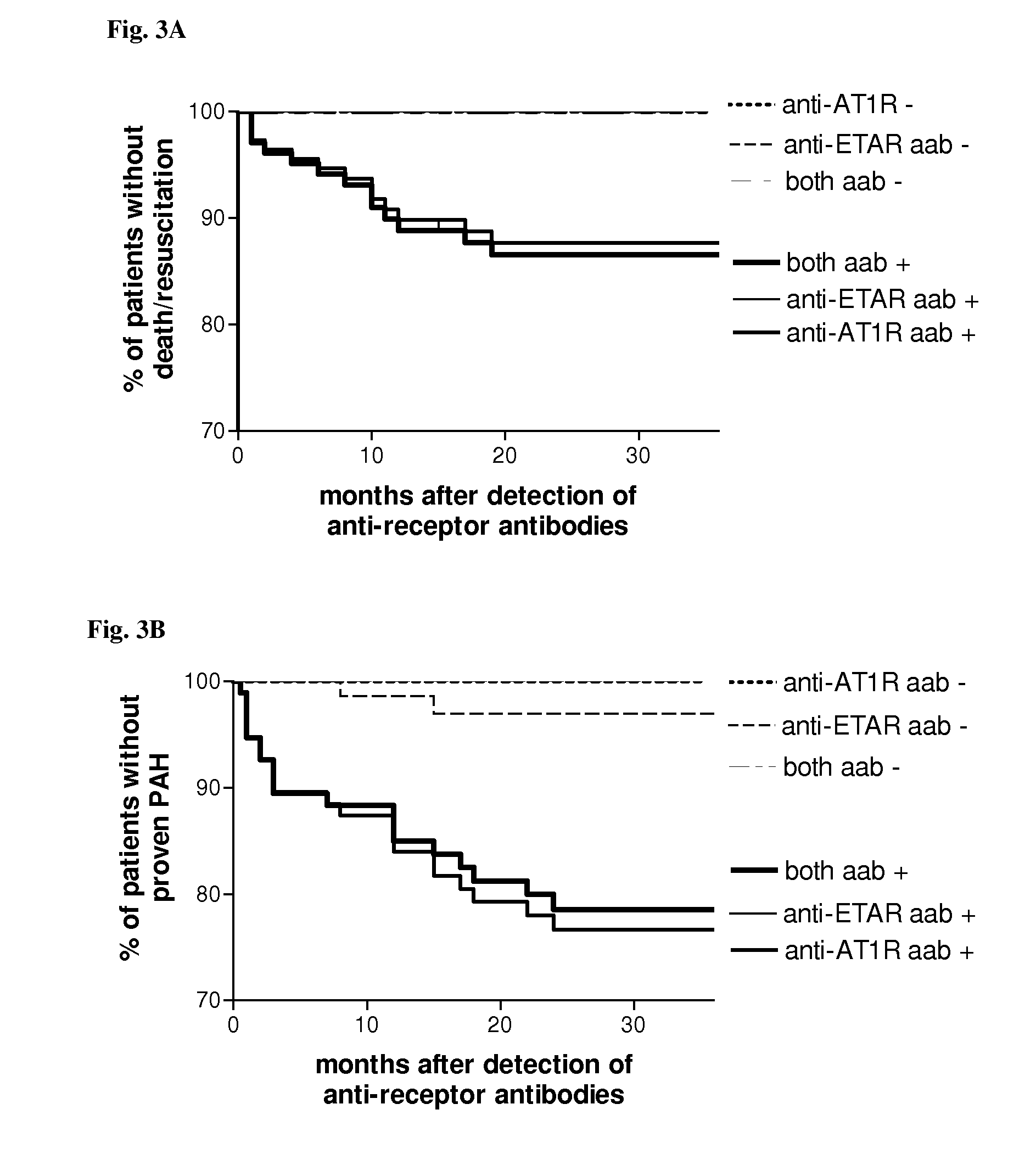Method for diagnosis of a disease involving an Anti-at1-receptor antibody
a technology of at1 receptor and antibody, applied in the field of method for diagnosis of a disease involving an at1 receptor antibody, can solve the problems of severe complications of rheumatoid arthritis and difficulty in standard treatment methods
- Summary
- Abstract
- Description
- Claims
- Application Information
AI Technical Summary
Benefits of technology
Problems solved by technology
Method used
Image
Examples
example i
AT1-Receptor ELISA
[0084]A suitable streptavidine-coated microtiter plate is loaded with the biotinylated peptide encoding the AT1-receptor.
[0085]Such peptides may be AVHYQSN (SEQ ID NO. 1), SHFYQTR (SEQ ID NO. 2) and / or GYYFDTN (SEQ ID NO. 3).
[0086]To this end, 100 μl of a solution per well in the microtiter plate is incubated with 5 μg / ml in a suitable dilution buffer. To measure the non-specific binding, wells are also filled with 100 μl of dilution buffer. The dilution buffer may comprise 0.5% bovine serum albumin, 10 mM phosphate buffer (pH 7.4), 140 mM NaCl and 0.05% TWEEN 20.
[0087]Subsequent to the time period of reaction, the peptide solution is moved by decanting and each well is washed three times with 250 μl of a suitable wash buffer. A suitable wash buffer may comprise 10 mM phosphate buffer (pH 7.4), 140 mM NaCl and 0.1% TWEEN 20. Thereafter, 100 μl per well of sera are diluted in a dilution buffer and placed on both the peptide-loaded and comparative plates are incubate...
example ii
[0090]Various patient groups (with positive diagnosis) as well as controls were tested with respect to the presence or absence of the anti-AT1-receptor antibody. Table I shows the result obtained.
TABLE IPresence of anti-AT1-receptorDiseaseantibody in %rheumatic disease35Patients without inflammatory rheumatic8.3disease
example iii
[0091]We analyzed sera of 212 patients with systemic sclerosis (SSc), 60 healthy control subjects, 120 rheumatoid arthritis patients and 124 additional control subjects with either morphea, primary Raynaud phenomenon or idiopathic pulmonary hypertension for the presence of anti-bodies directed against angiotensin II type 1 receptor (AT1R) and endothelin-1 type A receptor (ETAR) by a solid phase assay. Individual organ involvement, patient survival and the effect of immunosuppressive or cell therapies were also assessed. Vascular responsiveness to natural receptor ligands, Angiotensin II and Endothelin-1 was studied ex vivo in pulmonary resistance arteries.
[0092]AT1R-AA was detected in 56.6% of the SSc patients, respectively, but only in 9.6% subjects with control diseases, and 2.8% of the normal subjects. Patients with AT1R-AA had more severe disease. Positivity for AT1R-AA strongly predicted development of pulmonary arterial hypertension and SSc-related mortality. The antibody leve...
PUM
 Login to View More
Login to View More Abstract
Description
Claims
Application Information
 Login to View More
Login to View More - R&D
- Intellectual Property
- Life Sciences
- Materials
- Tech Scout
- Unparalleled Data Quality
- Higher Quality Content
- 60% Fewer Hallucinations
Browse by: Latest US Patents, China's latest patents, Technical Efficacy Thesaurus, Application Domain, Technology Topic, Popular Technical Reports.
© 2025 PatSnap. All rights reserved.Legal|Privacy policy|Modern Slavery Act Transparency Statement|Sitemap|About US| Contact US: help@patsnap.com



